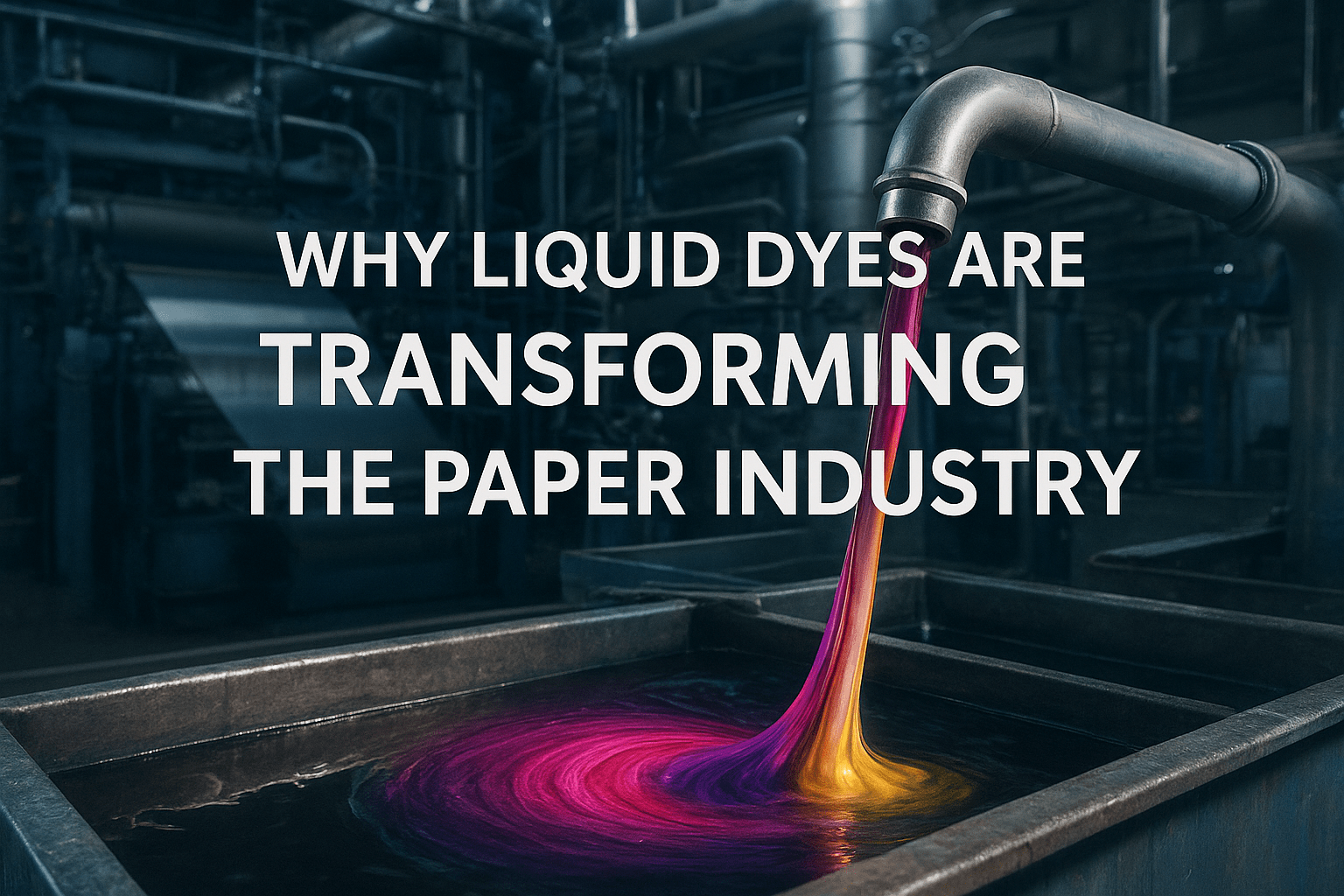In the fast-paced world of paper manufacturing, precision, efficiency, and sustainability are no longer optional—they’re essential. Enter liquid dyes, the modern solution that’s transforming how the paper industry adds colour to products. From notebooks and napkins to packaging and specialty papers, liquid dyes are helping manufacturers strike the perfect balance between vibrant aesthetics, operational efficiency, and environmental compliance.
What Are Liquid Dyes?
Liquid dyes are water- or solvent-based colorants pre-dissolved into a ready-to-use liquid form. Unlike traditional powder dyes, they don’t require additional processing or dispersion before use, making them ideal for high-speed, continuous paper production.
Common types of liquid dyes used in paper manufacturing include:
• Basic Dyes: Known for their brightness and affinity for wood-based pulps
• Direct Dyes: Offer better lightfastness and are widely used for uncoated paper
• Acid Dyes: Typically used in specialty or coated paper grades
Key Advantages of Liquid Dyes in Paper Production
1. Improved Process Efficiency
Liquid dyes are fully soluble and easy to meter, enabling precise colour dosing in real-time. This allows for faster colour changes, reduced machine downtime, and seamless integration with automated systems.
2. Consistent Colour Quality
With liquid dyes, manufacturers achieve uniform colour distribution across the paper web, minimizing shade variation and rework. This is particularly crucial in packaging and branding applications where colour consistency is critical.
3. Enhanced Safety and Cleanliness
Powder dyes often create airborne particles and dust, leading to health and hygiene concerns on the shop floor. Liquid dyes eliminate dust generation and reduce the risk of cross-contamination.
4. Environmentally Friendly
Many liquid dyes are low in VOCs, require less water for dispersion, and are designed for improved effluent treatment. They support eco-conscious manufacturing by minimizing waste and aligning with sustainability goals.
5. Customizability and Flexibility
Liquid dyes allow for on-the-fly adjustments and can be tailored for a range of substrates—be it tissue, kraft, newsprint, or decorative paper. This versatility opens new opportunities in niche and premium segments.
Applications in Modern Paper Mills
• Tissue Papers: Soft hues or vibrant colours for hygiene products and tableware
• Packaging Papers: Strong, stable colours for kraft liners and folding cartons
• Decorative & Specialty Papers: Custom shades for gift wrap, wallpapers, and art papers
• Security & Watermarked Papers: Specialized dyes for confidential documents and currency paper
Considerations When Using Liquid Dyes
While liquid dyes offer multiple benefits, manufacturers must consider:
• pH compatibility with the pulp and additives
• Retention efficiency within the fibre matrix
• Interaction with sizing agents, fillers, and optical brighteners
• Stability under heat and shear stress in high-speed machines
Partnering with experienced suppliers ensures that formulations are optimized for performance, safety, and compliance.
The Future of Colour in Paper
As paper manufacturers adapt to evolving consumer demands and regulatory pressures, liquid dyes are set to play a pivotal role. Innovations such as microencapsulation for controlled release, biodegradable dye systems, and AI driven colour management are already redefining what’s possible in paper coloration.
